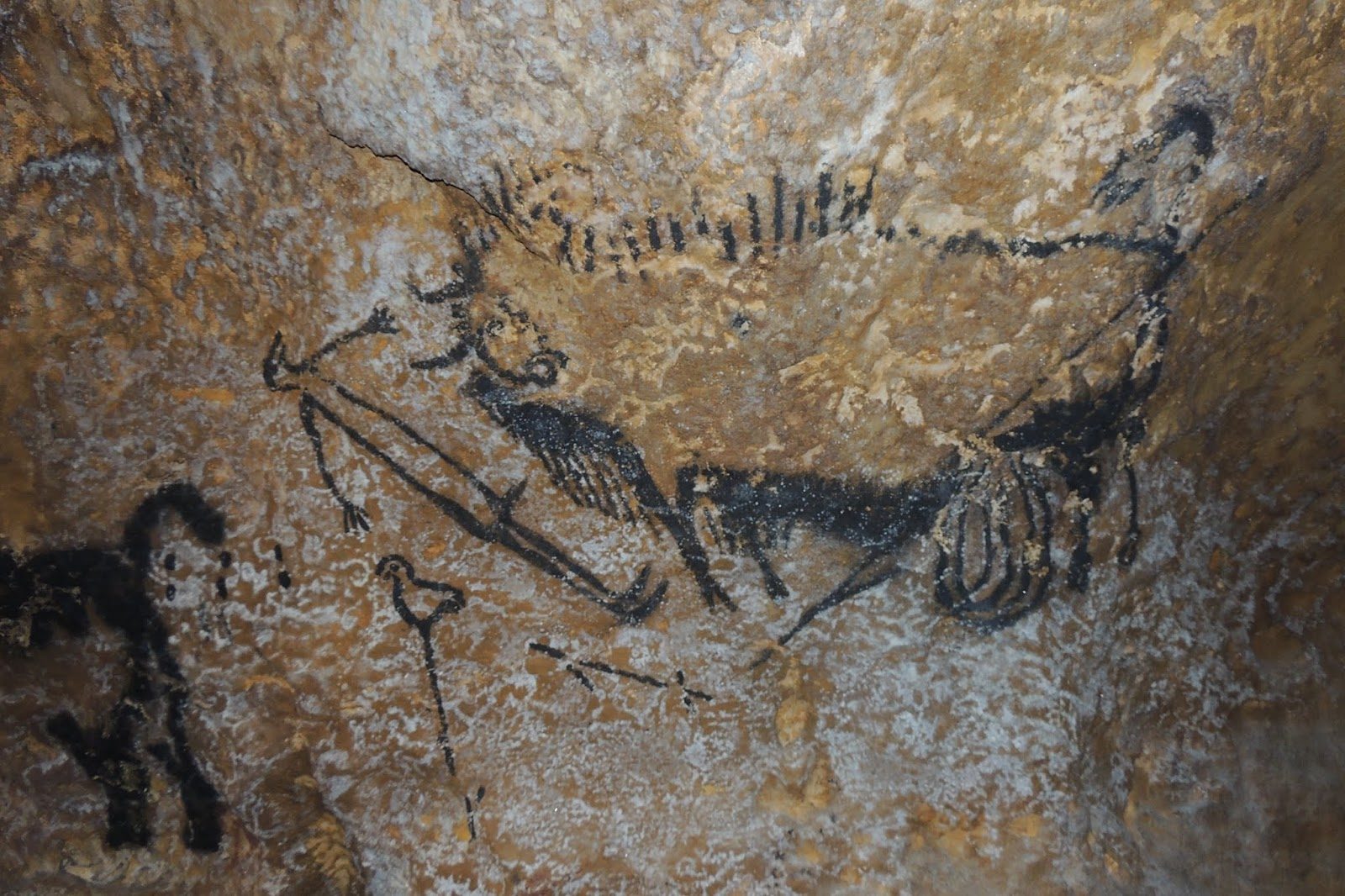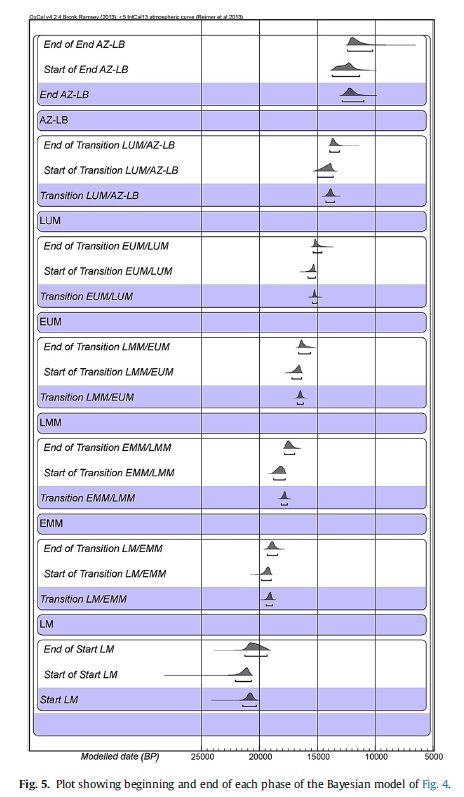The Lascaux shaft scene is perhaps the most iconic of all European Palaeolithic cave artworks (see below). It shows a bison and human, apparently both dying and normally interpreted as a hunting scene. But we now know, beyond any reasonable doubt,
the animal symbols represent constellations, and the Shaft Scene in particular very likely represents a date using precession of the equinoxes.

© Copy of the Lascaux Shaft Scene, courtesy of Alistair Coombs
Using the zodiacal method and our ancient zodiac, the date 'written' in the scene is between 15,300 and 15,000 BC (see
Prehistory Decoded). The similarity of this scene to Pillar 43 at Gobekli Tepe
suggests it documents another asteroid or comet strike, this time from the direction of Capricornus (represented by the aurochs). It so happens that the Taurid meteor stream would rave radiated from this direction at this time, suggesting this artwork memorialises another strike from the Taurid system. Given the presence of a giant comet in the inner solar system at this time, such frequent impacts are entirely expected.
Very interestingly, this time span also corresponds to a sudden temperature fluctuation in the North Atlantic region (see Prehistory Decoded), documented by a Greenland ice core, and to a major cultural transition: the Magdalenian to Azillian.
The Magdalenian culture occupied Spain and France for around 6,000 years, until around 15,000 BC (note, this time-span equals one entire cycle of apsidal precession of the Taurid meteor stream). It is generally accepted to be divided into three sub-phases; Lower, Middle and Upper. The archaeological record documents these cultural transitions; there are changes in populations and cultural artefacts, indicating significant migrations. However, the transition from Magdalenian to Azillian is an even more pronounced transition (hence the change in name), and the focus of many studies.
The best radiocarbon data available has been used to model these transitions. The figure below shows the main result. It is the LUM - EAZ transition that concerns us - this is the End of the Upper Magdalenian, and therefore the beginning of the Early Azillian. Converting the calibrated radiocarbon date corresponding to the Shaft Scene to an uncalibrated radiocarbon date (used in this plot), we get 14,050 BP, to within around 150 years. The agreement is perfect - 14,050 BP corresponds exactly to the major Magdalenian - Azillian transition shown here.

© Barshay-Szmidt et al., Quaternary International (2016)Uncalibrated radiocarbon chronology for multiple Magdalenian sub-phases and the Magdalenian - Azillian transition in Spain and France.
Cain was observed to kill Abel. Mars, or Jupiter, wrecks Apollo, the shining one, leaving "asteroids", literally star parts, fragments of Apollo, behind remaining "in orbit" about Sol. Massive fragments rain down on Earth. Many land at 200kph, setting off the iron age.
Venus was ejected from Eden. Earth "turns turtle", and the Sun remains steady and then sets where it used to rise. Graves now are "oriented", means rising, in the new direction. Star is now yellow.
Next?